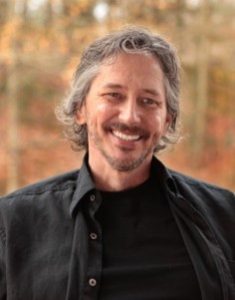 I am delighted and honoured to introduce my friend Dr. Emily Sandoz, a Clinical Psychologist and University Professor at University of Louisiana, Lafayette, USA. Emily is someone I admire for her infectious energy, warmth, and sparkling intellect. She is an expert in numerous domains, including eating disorders, Relational Frame Theory, Acceptance and Commitment Therapy, and Clinical Behavior Analysis. Alongside Ruth Anne Rehfeldt, Emily is a key player in bridging perceived gaps between behavior analysis and contextual behavioral science. Emily is Editor-in-Chief of the Journal of Contextual Behavioral Science. If you like singing and karaoke at a conference you might be waiting a while before Emily is ready to pass on the microphone 😉 . Enjoy this wonderful blog – Dr. Ian Tyndall, University of Chichester, UK.
I am delighted and honoured to introduce my friend Dr. Emily Sandoz, a Clinical Psychologist and University Professor at University of Louisiana, Lafayette, USA. Emily is someone I admire for her infectious energy, warmth, and sparkling intellect. She is an expert in numerous domains, including eating disorders, Relational Frame Theory, Acceptance and Commitment Therapy, and Clinical Behavior Analysis. Alongside Ruth Anne Rehfeldt, Emily is a key player in bridging perceived gaps between behavior analysis and contextual behavioral science. Emily is Editor-in-Chief of the Journal of Contextual Behavioral Science. If you like singing and karaoke at a conference you might be waiting a while before Emily is ready to pass on the microphone 😉 . Enjoy this wonderful blog – Dr. Ian Tyndall, University of Chichester, UK.

I was 21 when I met Dave Greenway. He taught Clinical Psychology, and I wanted to be a clinical psychologist, so I found myself registered for his course. I’m not sure what I expected, to be honest. But, looking back, I can see what I wanted. I wanted an answer. There was this question I’d carried for some time, but never really articulated. Not until I found myself swimming in Dave’s question for us. Dave wanted to know our theoretical orientations.
Up until this point, I’d treated my coursework in Psychology like classes in any other discipline. I learned the facts presented to me, got familiar with the studies that supported them, and practiced applying them to new ideas or situations. When I noticed that my classes didn’t seem to link up, that what I learned in social psychology didn’t seem to have much to do with what I learned in biopsychology, or personality, or sensation and perception, I assumed it was my job to be patient. That all those little links I wasn’t seeing would be revealed in the end. In the end, though, came Dave, insisting that these subdisciplines weren’t necessarily supposed to connect, that they represented different perspectives on the same stuff – the stuff of human behavior. And, what’s more, that I was to pick a perspective through which to understand all I’d learned. I was infuriated. Here I was, waiting for the keys to the kingdom, and this guy’s telling me I got to pick whatever key fits my hand? I immediately changed my major to Pre-Med.
Regardless of my major, though, I was stuck in this class, suddenly obsessed with this question I didn’t even know I had – where do I look for the causes of behavior? I had lots of answers, of course. I’d think about a behavior – binge eating, creativity, suicide, – and almost every Psychology class offered a cause, an answer, coherent in theory and supported by data. How would I know which to pick? Dave had an answer, not only for where I should look for causes, but also for what causes were, and for how I would know what cause was right. His answer was radical behaviorism.
Of course, I’d learned about behaviorism before. I could describe respondent and operant conditioning, schedules of reinforcement, generalization and discrimination long before Dave Greenway asked me to put words around how I saw the world. But neither those principles, nor the data supporting them, made clear what I think is the most important gift behavior analysis has to offer.
Looking through the lens of radical behaviorism, Dave had a rule for where the causes would be found – in the manipulable context outside of the behavioral stream. From Dave’s perspective, personality traits, brain chemistry, attachment styles, cognitive styles – these were all behaviors, all dependent variables. According to Dave, none of these theories answered my question because none of them included context in the analysis. They described behavior-behavior relations, in some cases quite precisely, but none of them pointed to anything we could directly manipulate. See, Dave also had a rule for what cause even meant. Something could be called a “cause” for behavior X if, when we manipulated it, behavior X changed. Cause, in Dave’s world, was a way of describing the functional relationship between behavior and context. Cause, for all intents and purposes, was just experimental control.
And on the day I got that, really got it, I changed my major back to Psychology and applied for grad school.

 In the years that followed, Dave pointed me to other behavioral mentors, folks like Rick Perkins and Kelly Wilson, both of whom supported me learning and applying behavior analysis as a creative process. And it wasn’t long before I was hooked. For me, radical behaviorism makes all of the rest of Psychology make sense. When the developmental psychologist points to the role of childhood attachment in predicting relationship success, when the psychobiologist points to the role of hormone activity in predicting perceived attractiveness, when the cognitive psychologist points to the role of emotional arousal in predicting false memory, I see folks interested in and excited by descriptions of behavior-behavior relations. And as a clinical psychologist (I did eventually become a clinical psychologist), I want more.
In the years that followed, Dave pointed me to other behavioral mentors, folks like Rick Perkins and Kelly Wilson, both of whom supported me learning and applying behavior analysis as a creative process. And it wasn’t long before I was hooked. For me, radical behaviorism makes all of the rest of Psychology make sense. When the developmental psychologist points to the role of childhood attachment in predicting relationship success, when the psychobiologist points to the role of hormone activity in predicting perceived attractiveness, when the cognitive psychologist points to the role of emotional arousal in predicting false memory, I see folks interested in and excited by descriptions of behavior-behavior relations. And as a clinical psychologist (I did eventually become a clinical psychologist), I want more.
When I’m sitting with a client who’s suffering, a person who’s found themselves lost and stuck in their own skin, in their own lives, I need a worldview with action implications. I need a theoretical orientation that tells me how to understand what I’m directly observing, what to do or say next, and how to know that what I do or say is actually working to train new behaviors. When I’m sitting with someone who has trusted me with their suffering, all I have is my own behavior. I need an analysis that includes me in it.
And so, with Dave in mind, I use my behavior to shift the context to one in which I can directly observe the client’s suffering. In doing so, I establish functional relationships between the aversive contexts I introduce with my own behavior, and that which I’m observing. And once I’m able to reliably evoke the response class that comprises their suffering, my job becomes to add to the context to build the repertoire by evoking and reinforcing new behaviors. And on my best days, my clients find freedom… freedom in the way Skinner meant it – freedom from aversive control.
I’m going to assume that if you’re reading this blog, you know that behavior analysis has a lot to offer the world. What you might not know, however, is how much we have to offer Clinical Psychology and behavior therapy at large. In the fourteen years since my first ABAI conference, I’ve watched our community grow and, I think as a result of that growth, change. Behavior analysts are working in more diverse settings with more diverse client populations than ever before, some of which are virtually absent in the behavioral literature. And to our credit, I think we’ve responded by becoming more open to recognizing the value in understanding the behavior-behavior relations emphasized in mentalist orientations so that we can extend that work to a behavioral account that includes the contexts that control those relations. However, it’s my hope that we don’t stop there. I hope that this openness to what’s already out there is coupled with the creativity and innovation that I think behaviorism uniquely affords. In our rejection of mentalism, we insist on analyses that include manipulable contexts outside of the behavioral stream. I hope to see more of those analyses applied to understanding and treating the kinds of difficulties that land people in an office like mine.
Dave died a little over five years ago. But he believed in a behavior analysis that could save the world. And now I do, too.
